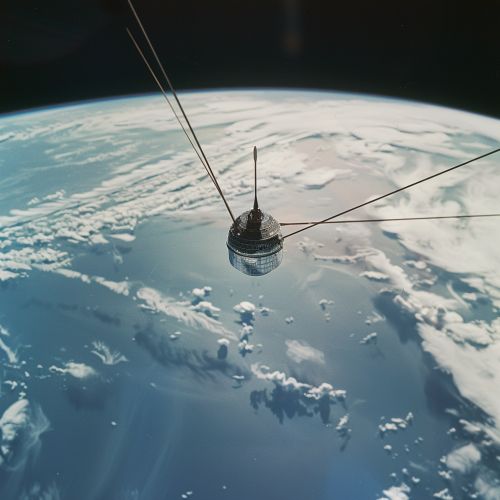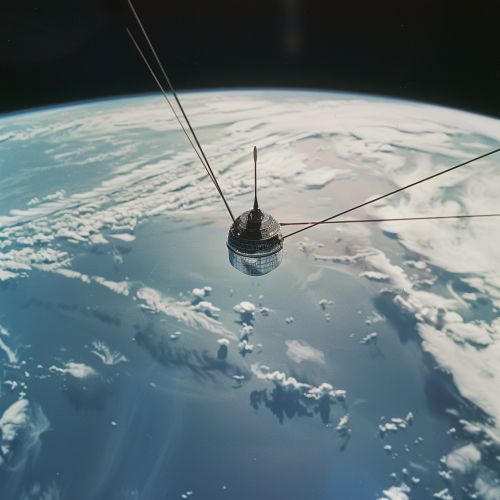Russian inventions and discoveries
Russian Inventions and Discoveries
Russia has a rich history of scientific and technological advancements, contributing significantly to various fields such as physics, chemistry, engineering, and medicine. This article delves into some of the most notable Russian inventions and discoveries, providing a comprehensive overview of their development, impact, and the scientific principles behind them.
Early Contributions
Periodic Table
One of the most significant contributions to chemistry is the periodic table of elements, developed by Dmitri Mendeleev in 1869. Mendeleev's table organized elements based on their atomic mass and properties, predicting the existence and properties of elements yet to be discovered. This systematic arrangement has become a fundamental tool in chemistry, aiding in the understanding of chemical behavior and relationships.
Radioactivity
Ivan Pavlov, a Russian physiologist, is renowned for his work on classical conditioning, but it is less known that his research also contributed to the understanding of radioactivity. Pavlov's experiments with dogs laid the groundwork for later studies on the effects of radiation on living organisms, influencing the field of radiobiology.
20th Century Innovations
Space Exploration
Russia's contributions to space exploration are monumental. The launch of Sputnik 1 in 1957 marked the beginning of the space age. This artificial satellite, developed by Soviet engineers, was the first to orbit the Earth, providing valuable data on the Earth's atmosphere and paving the way for future space missions.


Tsiolkovsky's Rocket Equation
Konstantin Tsiolkovsky, a pioneer in astronautics, formulated the Tsiolkovsky rocket equation, which describes the motion of vehicles that follow the principle of conservation of momentum. This equation is fundamental in the field of rocketry, providing the mathematical basis for understanding how rockets achieve the necessary velocity to reach space.
Laser Technology
The development of laser technology owes much to the work of Russian physicist Alexander Prokhorov, who, along with Nikolay Basov, developed the theoretical foundation for the maser and laser. Their work on quantum electronics and the principles of stimulated emission has had profound implications in various fields, including medicine, communications, and manufacturing.
Medical Advances
Artificial Heart
Russian scientist Vladimir Demikhov is credited with pioneering work in organ transplantation and the development of the artificial heart. In the 1950s, Demikhov conducted groundbreaking experiments, including the transplantation of hearts and lungs in animals, which laid the foundation for modern organ transplant surgery.
Blood Transfusion
Alexander Bogdanov made significant contributions to the field of blood transfusion. In the early 20th century, Bogdanov established one of the first blood transfusion institutes and conducted extensive research on the therapeutic effects of blood transfusion, which has become a critical procedure in modern medicine.
Engineering and Technology
AK-47
The AK-47, designed by Mikhail Kalashnikov, is one of the most widely recognized and used assault rifles in the world. Developed in 1947, the AK-47 is known for its durability, simplicity, and reliability, making it a preferred weapon in various military forces globally.
Ekranoplan
The ekranoplan, a ground-effect vehicle, was developed by Soviet engineer Rostislav Alexeyev. This innovative craft operates on the principle of ground effect, where the aerodynamic interaction between the wings and the surface creates lift, allowing the vehicle to glide just above the water or land. Ekranoplans were designed for rapid transport and military applications.
Computing and Cybernetics
BESM
The BESM (Bolshaya Elektronno-Schetnaya Mashina) series of computers, developed in the 1950s, were among the first Soviet electronic computers. Led by Sergey Lebedev, these machines were instrumental in advancing Soviet computational capabilities, contributing to various scientific and military projects.
Cybernetics
Norbert Wiener's concept of cybernetics found a strong following in the Soviet Union, where scientists like Anatoly Kitov and Victor Glushkov applied it to the development of automated control systems and computer networks. Their work laid the groundwork for modern information technology and systems theory.
Physics and Mathematics
Landau Theory
Lev Landau, a prominent Soviet physicist, developed the Landau theory of phase transitions, which describes the behavior of materials undergoing changes in state, such as from solid to liquid. This theoretical framework has been crucial in understanding critical phenomena in condensed matter physics.
Kolmogorov Complexity
Andrey Kolmogorov made significant contributions to algorithmic information theory, particularly the concept of Kolmogorov complexity. This measure of the complexity of a string of data is foundational in the fields of computer science and information theory, influencing the development of algorithms and data compression techniques.
